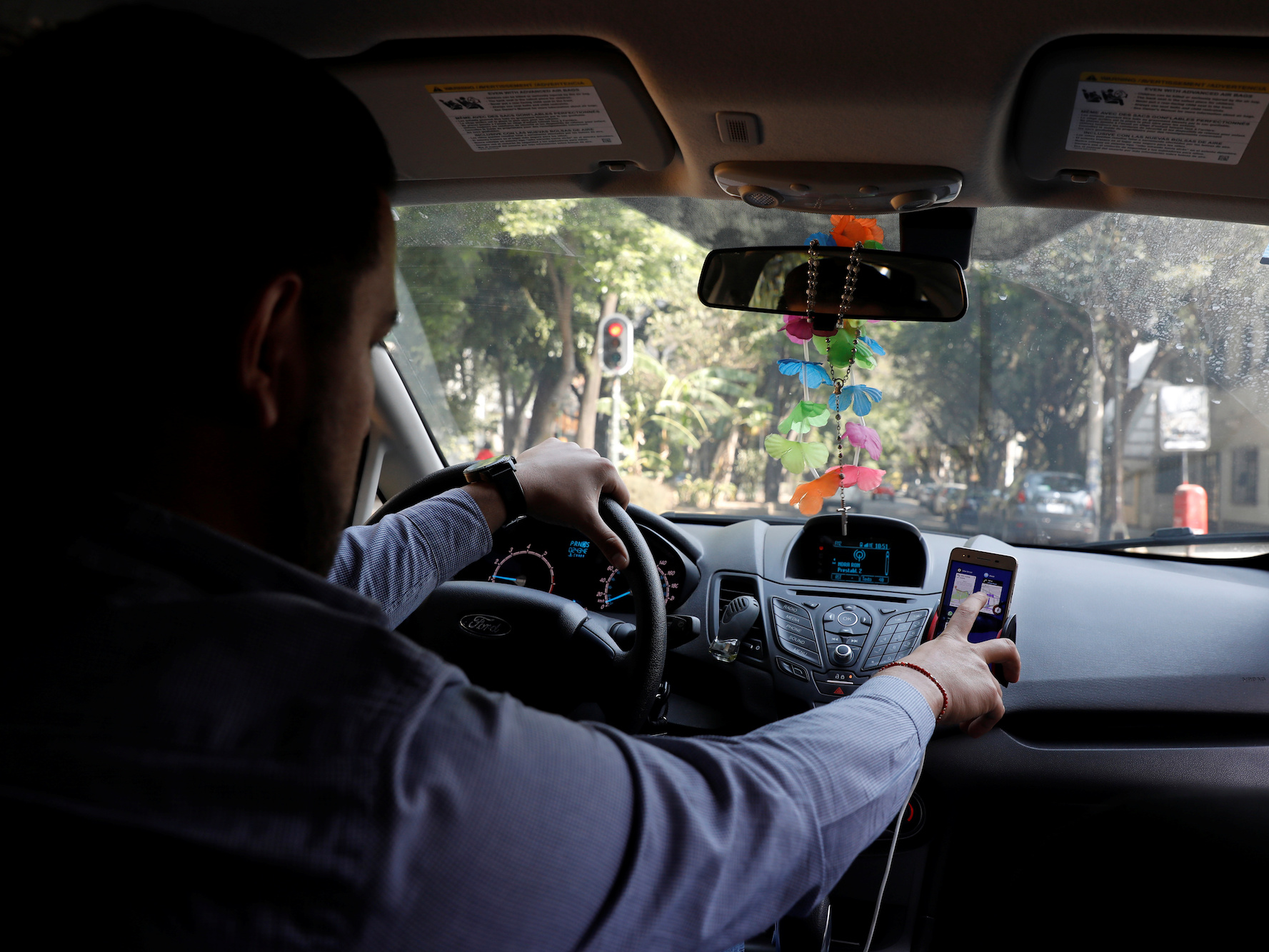- Uber filed to go public last week, following in the footsteps of its rival, Lyft.
- The two ride-hailing services are constantly in competition to try to get customers to pick their app for their next ride.
- Some of the biggest differences between the apps include their safety features, rewards programs, and even the opinions of the drivers who work for both Uber and Lyft.
- Visit BusinessInsider.com for more stories.
The battle between Uber and Lyft is nothing new – the two platforms are natural rivals, fighting to get one step ahead and get customers to ride with their service. Only expect that to intensify once Uber joins Lyft as a publicly-traded company.
The differences between Uber and Lyft are minimal at this point, since the platforms are constantly mimicking each other’s best assets – sort of like Snapchat and Instagram – to try to one-up each other.
However, there are a few key ways in which the two services differ, so be advised before you call your next ride.
Here’s how two of the most popular ride-hailing app, Uber and Lyft, compare:
The first thing you should know is that I live and work in New York City, so that's where I did all of my testing. Prices will vary depending on where you are in the world, as will which features and options you do and don't have available.

On their face, Uber and Lyft are not so different. Open up either app, plug in your address, and you can be in a car and en route to your destination in just a few minutes.

When choosing your destination, both apps give you options to save your home and work addresses for easy access. However, Uber lets you have additional "saved places," in case there's anywhere else you often go. Either way, your favorite places are a little harder to find on Lyft — they're at the bottom of the list of destination.

I checked Uber and Lyft a few times throughout my day to check if there were major price differences along the same route. When I checked the prices for this quick cross-borough ride, Uber was less expensive by a few dollars for both the shared-ride and standard ride options.

Uber calls its shared-ride service "Pool," while Lyft is simply "shared." Meanwhile, the standard ride option on Uber is called "UberX," while Lyft just calls it..."Lyft."
But when I tried during rush hour on a weekday, Lyft was slightly less expensive than Uber — even before the promotion applied to my account — but not by much. Both apps implement surge pricing during peak hours that jack up costs for rides, but it's not clear how that exactly changed the prices on either Uber and Lyft. In any case, the differences in price were around $4, if you don't count my Lyft promotion.

Uber and Lyft both offer additional, pricier options for getting to your destination. You can order a ride in SUV, or a luxury ride in a black car or higher-end SUV. An important difference: While both allow you to call vehicles equipped with car seats, only only Uber has the option to order wheelchair-accessible rides.

This is another case where the two companies have different nomenclatures: Uber XL calls a moderately-priced SUV, Uber Black is for a luxury car, and Uber Black SUV calls for a high-end SUV.
Lyft, meanwhile, offers Lyft XL for an SUV, Lyft Lux Black for a black car, and Lyft Lux Black XL for a luxury SUV.
Taking a trip with either service is pretty similar — both may ask you to walk a few blocks if you're taking a shared ride, and both apps let you see the route you're taking and the estimated time you'll arrive at your destination.

Yet there are a few key differences when it comes to what you can do in the app during your trip. Both let you see your driver's information, and let you edit the ride mid-trip — whether that's adding a stop or changing your destination. Only Uber lets you split the ride fare with friends in-app, since Lyft removed the option this past October.

Source: Business Insider
But the most stark difference to me were Uber's safety measures. While both apps allow you to share your location with family and friends, Uber also has options in the app to call 911 and share your location and trip details with authorities, should the worst occur.

After a trip has ended, both Uber and Lyft allow you to review your trip, where you can get the price breakdown or add a tip for your driver. For more complicated actions beyond that, Uber has a list of options to choose from. For Lyft, you have to communicate with the app's "help bot" to get more options.

A common post-trip headache is getting back an item you left in the car — I can attest to that from my many experiences trying to get back items I lost. Both apps have formal processes for getting back lost items, which includes paying a $15 delivery fee to have your item returned to you.

However, I'd suggest just calling or texting your driver directly, if you're comfortable with it: Most are flexible, in my experience, and will work with you to get back your item outside of the app.
When it comes to paying for your ride, Uber and Lyft offer various options besides a credit card, including Apple Pay and PayPal. Uber goes above and beyond, though, with several services specific to the app. If you use Uber Cash to pre-pay for your rides, for example, you get a 5% discount.

Uber also has special offers if you pay at certain local restaurants and businesses with a credit card you have linked to the app. Check the Uber app for details on which establishments are included, and which credit cards are eligible for the offer.
Uber recently implemented a rewards program similar to that of Starbucks: Every time you ride, you earn points, which can be used for credit towards yet more rides. Lyft doesn't have such a program, but I've found I frequently get promos from Lyft for discounted rides, even when I haven't used the app in a while.

Both apps recently implemented subscription services to pay for rides ahead of time — at least in New York City. Uber offers a monthly Ride Pass for $25 that gives you 20% off rides and protection from surge pricing. Lyft offers a couple different all-access plans that all you to take 30 rides in 30 days for a set fee: $189 for shorter rides, $299 for longer rides.

Uber Ride Pass recently expanded into 19 new American cities, while Lyft offers its All-Access plan all over the United States.
Outside of the ride-hailing experience, Uber and Lyft are both in the scooter and bike industry. In certain cities, you can use both apps to book scooters — Uber's app lets you book electric bikes, in some places, while Lyft owns Motivate, which runs city bike sharing programs like NYC's Citi Bike and San Francisco's Ford GoBike. Not every service is available in every city, however, so your mileage may vary...literally. Also, only Uber offers food delivery, by way of UberEats.

I asked some of my recent ride-hailing drivers in NYC about their experiences driving for Uber and Lyft. All of them drive for both services, with both apps running at the same time. They'll switch off one app as soon as they get a call on the other.

The drivers I spoke to all said they prefer driving with Uber over Lyft in New York, simply because they get more rides from more customers. One driver said Uber has "saturated" the ride-hailing market in the city, making it impossible to ignore if drivers want to make money.


